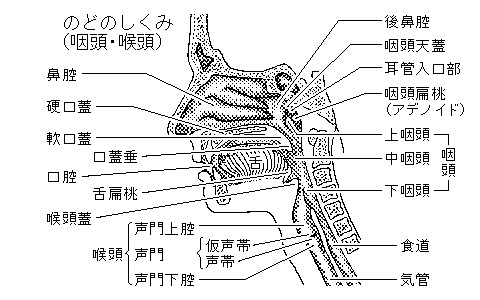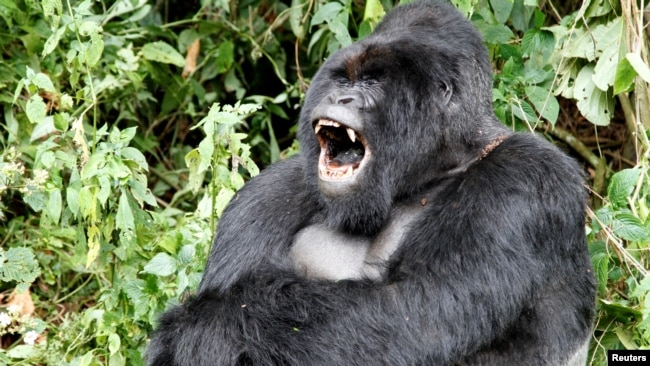ヒトとサルを分けた声帯の進化
”喪失は、新たなる進化の扉を開く。”
咽頭(いんとう)pharynx(食べ物の通り道)
喉頭(こうとう)larynx (空気の通り道)
声帯は内側に筋肉(声帯筋)があり、外側を粘膜(声帯粘膜)で覆っています。 またその声帯を周囲の筋肉(喉頭筋)が前、横、後ろ、斜めに引っ張ったり弛ませたりすることで振動部分である声帯粘膜の長さや緊張度、太さを微妙に調節しさまざまな声を出します。

出典:コトバンク
ちなみに 喉仏はAdam's appleアダムの林檎と言います。
知らないことを知るって、楽しいですね♬
VOAで英語を学びましょう!!
※医学用語に精通しておりませんので、和訳内容の相違は何卒ご容赦ください。
- 研究成果:声帯の進化的変化がヒトの発声につながった可能性(和訳)
- Study: Evolutionary Changes in Voice Box May Have Led to Human Speech
研究成果:声帯の進化的変化がヒトの発声につながった可能性(和訳)
Study: Evolutionary Changes in Voice Box May Have Led to Human Speech
August 15,2022
科学者たちは、人間以外のprimates霊長類のvoice box声帯が長い時間をかけて変化したことが、人間の発声につながった可能性があると述べています。
研究者たちは、larynx喉頭としても知られている、primates霊長類の異なる43種の声帯を調べたと言います。その結果、ヒトにはvocal membrane声膜と呼ばれる構造がないため、類人猿やサルとは異なることが分かりました。声膜は、vocal cords(医学用語)声帯に付着する小さな筋肉を含んでいます。
また、研究者らによれば、一部の類人猿とサルが大きく深い声で鳴くのに役立つとされる、気嚢と呼ばれる風船のような構造も人間にはないということです。この気嚢はまた、霊長類が異常に速い速度で呼吸することを意味する過呼吸になるのを防ぐのにも役立っているとのことです。
科学者らは、これらの組織が失われた結果、ヒトの発声システムは安定し、ヒトの発話の発達、または進化には不可欠であったと言います。このような発声によって、ヒトは明瞭で複雑な音を使って考えや感情を表現することができる、と研究チームは述べています。
ヒトは、サルや類人猿と同様に霊長類です。我々の種である、ホモ・サピエンス、につながる進化系統は、我々の近縁種であるチンパンジーにつながる系統から約600-700万年前に分かれました。研究者らは、声帯の変化はその後に起こったと考えられていると言います。
タケシ・ニシムラ氏は、京都大学の人類行動進化起源研究センターに所属しています。彼はこの研究の主執筆者であり、この研究は最近Science誌に掲載されました。ニシムラ氏は、この研究は、ヒト以外の霊長類における複雑な発声構造が、振動を効果的に制御することを困難にしている可能性を示唆しているとと言います。
もう一人の主席研究員であるオーストリアのウィーン大学のテカムセ・フィッチ氏は、声膜のおかげで他の霊長類は人間よりも大きな声で高い声で鳴くことができると付け加えています。「しかし、声膜があるために、声が途切れたり、不規則な発声になったりすることが多いのです。」と彼は言っています。
喉頭はwindpipe気管の上部につながる喉の管で、vocal cords(医学用語)声帯があり、話す、呼吸する、飲み込むなどの動作に使われます。「喉頭は発声器官であり、私たちが歌ったり話したりするときに使う信号を作り出すのです。」と、フィッチ氏は語ります。
このような軟組織は、太古の生物の遺骸である化石には現れにくいため、今回の研究では現生種のみが含まれました。つまり、この変化がいつ起こったのか、正確には不明であるというを意味します。
フィッチ氏は、単純化された発達は、猿のような要素と人間のような要素を兼ね備えたAustralopithecusアウストラロピテクスという人間の祖先において起こった可能性があると言います。科学者たちはアウストラロピテクスが約385万年前にアフリカに初めて出現したと考えています。
研究チームは、この変化は、240万年前にアフリカに初めて出現した我々の祖先グループであるHomoホモで後に起こった可能性があると述べている。人類が属する霊長類である –Homo sapiensホモ・サピエンス は、30万年以上前にアフリカに出現しています。
しかし、フィッチ氏は、進化的に喉頭が単純化されたことは重要だが、"それだけで言葉を獲得したわけではない "と指摘します。彼は、喉頭の位置の変化など、他の体の発達も、時間の経過とともに発声に重要な意味を持つようになったと述べています。
「音声と言語は決定的に関連しているが、同義ではありません。」とハロルド・グズール氏は言います。彼はジョージア州アトランタにあるエモリー大学の霊長類学者であり心理学者です。「音声は、言語表現の可聴音ベースの方法であり、霊長類の中で唯一、ヒトはそれを作り出すことができるのです。」と、彼はScience誌に関連する解説を書いています。
研究者達は、人間の話し言葉が複雑化したのは、進化的に単純化された結果であると指摘しています。
「進化において、時には’少ないことは多いこと’であるというのは、非常に興味深いことだと思います。」とフィッチ氏は言います。さらに、「ある形質を失うことによって、新しい適応への扉が開かれるかもしれないのです。」とも述べています。
Study: Evolutionary Changes in Voice Box May Have Led to Human Speech
Scientists say changes in the voice box of nonhuman primates over time may have led to human speech.
The researchers said they examined the voice box, also known as the larynx, in 43 different species of primates. Their study showed that humans differ from apes and monkeys because humans lack a structure called a vocal membrane. This contains small, muscular attachments to the vocal cords.
The researchers said humans also lack balloon-like structures called air sacs that may help some apes and monkeys produce loud, deep calls. The air sacs also help the primates avoid hyperventilating, which means to breathe an unusually fast rate.
The scientists said the loss of these tissues resulted in a stable vocal system in humans that was critical to the development, or evolution, of human speech. Such speech permits humans to express thoughts and feelings using clear and complex sounds, the team said.
Humans are primates, as are monkeys and apes. The evolutionary lineage that led to our species, Homo sapiens, split from the one that led to our closest living relatives, chimpanzees, about 6-7 million years ago. The researchers say the voice box changes are believed to have happened after that.
Takeshi Nishimura is with Kyoto University's Center for the Evolutionary Origins of Human Behavior in Japan. He was a lead writer of the study, which recently appeared in the publication Science. Nishimura said the research suggested that complex vocal structures in nonhuman primates can make it difficult to effectively control vibrations.
Another lead researcher, Tecumseh Fitch of Austria’s University of Vienna, added that vocal membranes permit other primates to make louder, higher calls than humans. “But they make voice breaks and noisy vocal irregularity more common," he said.
The larynx is a tube in the throat that is connected to the top of the windpipe and contains the vocal cords. It is used for talking, breathing and swallowing. "The larynx is the organ of voice, which creates the signal we use to sing and speak," Fitch said.
Only living species were included in the study because these soft tissues are not likely to appear in fossils, the remains of ancient life. This means that it is unclear exactly when the changes took place.
Fitch said it is possible the simplified development happened in a human ancestor called Australopithecus, which combined ape-like and human-like elements. Scientists believe Australopithecus first appeared in Africa about 3.85 million years ago.
The research team said the changes could have happened later in our ancestor grouping Homo, which first appeared in Africa 2.4 million years ago. Homo sapiens – the primate species human beings belong to – appeared more than 300,000 years ago in Africa.
Fitch noted, however, that while the evolutionary simplification of the larynx was important, it "did not give us speech by itself." He noted that other body developments also mattered for speech over time, including a change in the position of the larynx.
"Speech and language are critically related, but not synonymous," said Harold Gouzoules. He is a primatologist and psychologist at Emory University in Atlanta, Georgia. "Speech is the audible sound-based manner of language expression - and humans, alone among the primates, can produce it," he wrote in a related commentary in Science.
The researchers noted that the increased complexity of human spoken language came as a result of evolutionary simplification.
"I think it's pretty interesting that sometimes in evolution 'less is more,'" Fitch said. He added, “By losing a trait, you might open the door to some new adaptations."
Words in This Story
primate – n. a member of the group of animals that includes monkeys and people
vocal cord – n. folds of skin at the top of your throat that make sounds when air from your lungs moves over them
stable – adj. not likely to change or end suddenly
vibration – n. to shake with small, quick movements
fossil – n. part of an animal or plant that lived a long time ago that has been preserved in rock
synonymous – adj. closely related or connected to something else
audible – adj. able to be heard
adaptation – n. the process or act of changing something to fit a new situation
